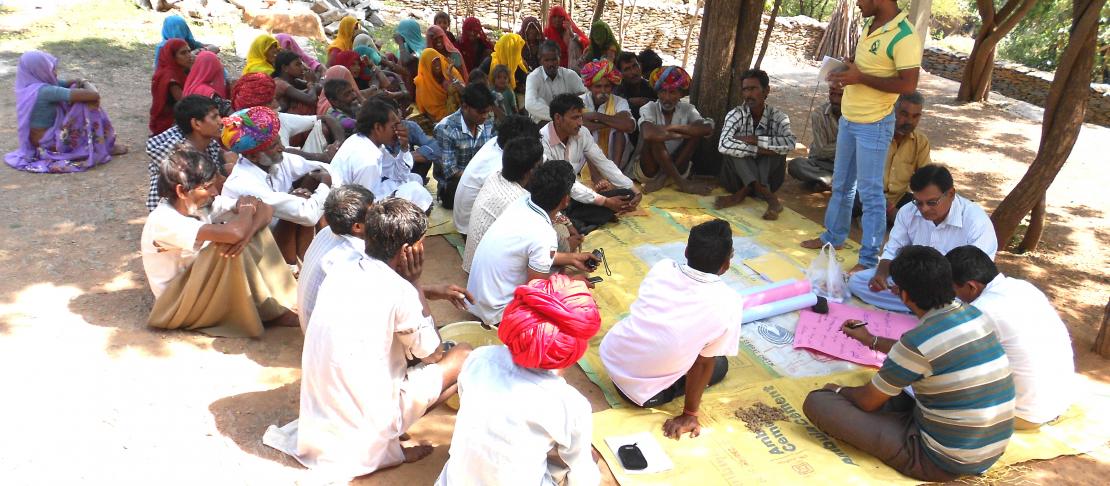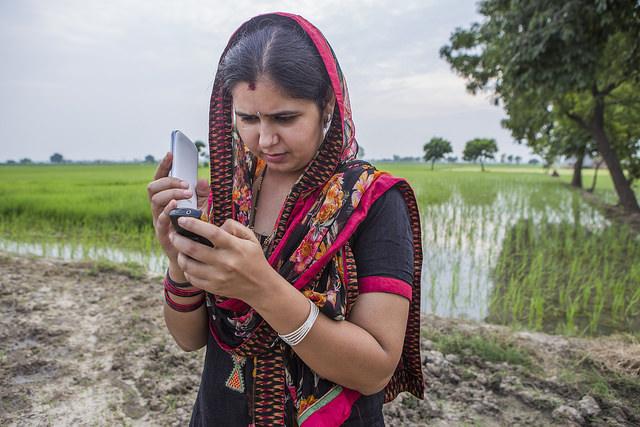What factors influence farmers’ choice of information sources?

A targeted approach to disseminating agriculture-related information that takes into account the diversity of sources can ensure information reaches as many farmers as possible.
It's been said before, but we can say it again. Empowering farmers starts with information. In these times of uncertainty related to climate change and climate variability, credible information on weather updates, new technologies, government schemes and market prices can enable them to make better choices and decisions.
But what factors influence which sources of agriculture-related information farmers prefer? Researchers at the International Maize and Wheat Improvement Centre (CIMMYT) have published a paper, titled Socio-economic Factors Affecting Adoption of Modern Information and Communication Technology by Farmers in India: Analysis Using Multivariate Probit Model, looking into this question.
Farmers aren't a homogenous group
Often while disseminating agriculture-related information, farmers are treated as a homogenous group. We know that the uptake of information, and any actions based on it, relies heavily on where people source it from. Having a more targeted approach to disseminating agriculture-related information can ensure that information reaches as many farmers as possible and takes into account the diversity of sources that farmers rely on.

Richer and more educated farmers tend to use a greater diversity of information sources and more modern ICT tools like mobile phones. PHOTo: P. Vishwanathan
Primary survey data from 1200 households in 120 villages in the Indo-Gangetic Plains states of Punjab, Haryana, Uttar Pradesh, Bihar and West Bengal in India formed the basis of this study. The region is particularly vulnerable to the effects of climate change given status as a major 'food bowl’ for the Indian sub-continent.
Data were collected using a structured questionnaire which gathered information on socio-economic characteristics of the households, their access to different types of information and the sources of information. A multivariate probit specification is used to examine how different socio-economic factors influenced the decision of farmers in adopting different sources of information for their agricultural activities. During the field survey farmers reported the use of 17 different sources of information for gathering information on agricultural activities. This was grouped into four broad categories, i) face-to-face (community groups, commission agents), ii) other farmers (relatives, neighbours), iii) mainstream media (television, newspapers, radio) and iv) modern ICT tools (landline phones, mobile phones, internet and internet kiosks).
Conclusions
The main conclusion from the study is that socio-economic factors like age, education, farm size do influence what kind of information sources farmers rely on.
For instance, with increase in educational levels, farmers veer more towards modern information outlets like mobile phones and internet. Rich farmers tend to have greater accessibility to diverse information sources as compared to smallholder or subsistence farmers. Access to and uptake of modern ICT is also constrained by low literacy levels.
These results can be used to design programmes specific to farmers’ profiles. Information providers can better anticipate which farmers would use their information in combination with other information sources. These results highlight the complementarity in the use of different sources of information and the role of education in getting farmers connected to new sources of information.
This study is part of an ongoing project funded by CCAFS. Applications of this research will be implemented in Climate- Smart Villages in India and Nepal.
Learn more about Climate-Smart Villages
Surabhi Mittal is a Senior Economist at CIMMYT India in New Delhi. She can be reached on s.mittal@cgiar.org. Mamta Mehar is Associate Scientist-Economics, IRRI.
This blog was drafted by Dharini Parthasarathy, Communications Specialist, CCAFS South Asia.



